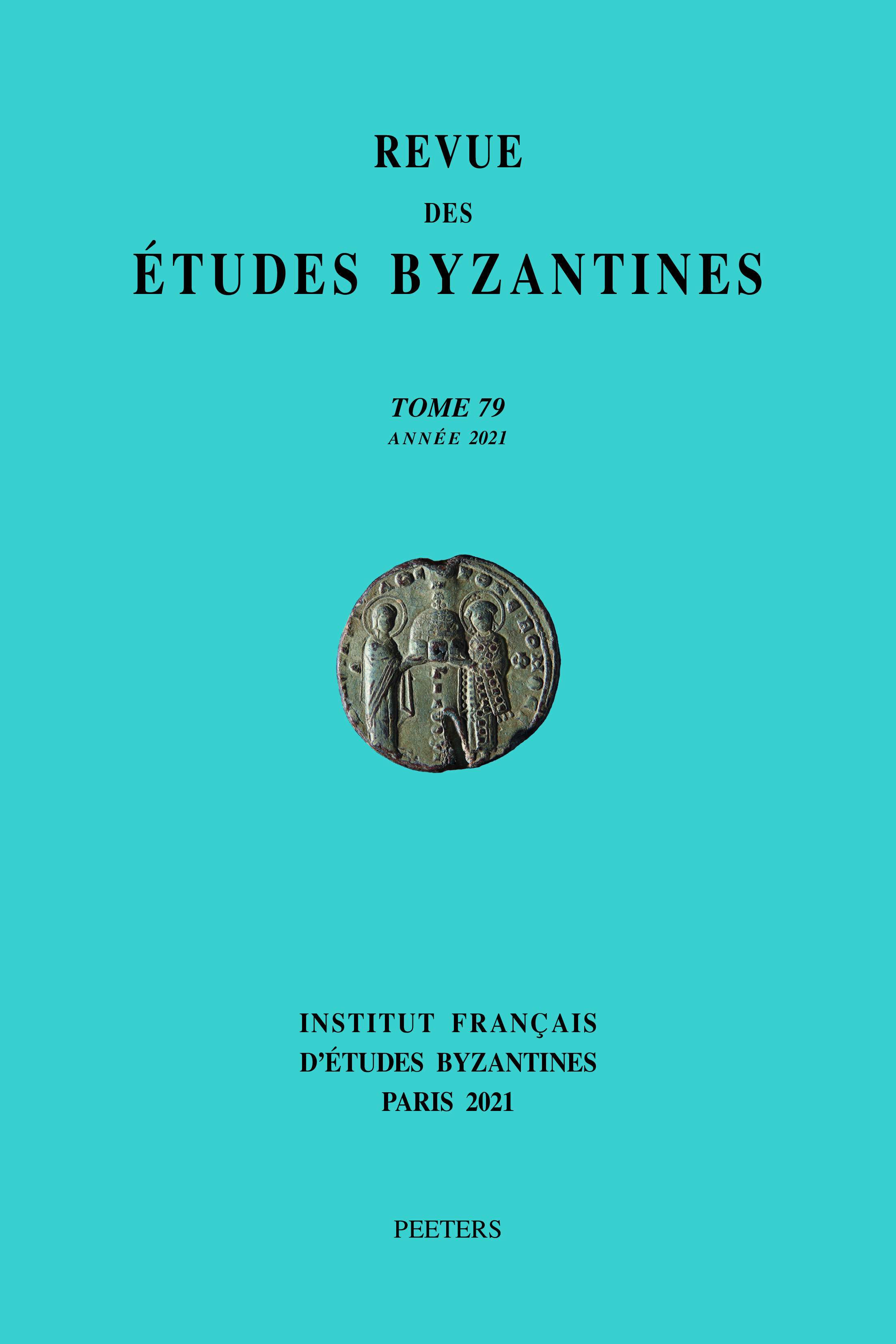 previous article in this issue previous article in this issue | next article in this issue  |

Preview first page |
Document Details : Title: La chaîne C57.1 sur les douze prophètes Subtitle: Un état des lieux Author(s): LORIEUX, Tiphaine Journal: Revue des Études Byzantines Volume: 82 Date: 2024 Pages: 53-78 DOI: 10.2143/REB.82.0.1000002 Abstract : Un seul témoin de la chaîne C57.1 sur les douze petits prophètes est aujourd’hui répertorié, le manuscrit de Turin, Biblioteca Nazionale Universitaria, B.I.2 (10e s.), malheureusement si abîmé que la chaîne est en grande partie illisible. Le présent article vise à présenter de nouveaux témoins de la chaîne et à montrer l’intérêt que présenterait son édition. Il existe en effet deux autres manuscrits qui contiennent la chaîne dans son intégralité, et un troisième qui transmet les textes introductifs de la chaîne. Ces témoins attestent son originalité: la chaîne transmet non seulement des fragments de Cyrille d’Alexandrie et de Théodoret de Cyr, mais aussi des extraits d’Hésychius de Jérusalem, d’Hypatios, ainsi qu’un grand nombre de scholies non identifiées. Celles-ci sont de genres variés: on trouve aussi bien de courtes scholies stylistiques et grammaticales que de longues interprétations allégoriques. Only one witness of the catena C57.1 on the twelve minor prophets is known today, the manuscript of Turin, Biblioteca Nazionale Universitaria, B.I.2 (10th c.), unfortunately so damaged that the catena is largely illegible. The aim of this paper is to present new witnesses of the catena and to show how interesting it would be to publish it. There are in fact two other manuscripts that contain the entire catena and a third one that only transmits the introductory texts. These witnesses attest to its originality: the catena transmits not only fragments of Cyril of Alexandria and Theodoret of Cyrrhus, but also extracts from Hesychius of Jerusalem and Hypatios, as well as a large number of unidentified scholia. These are of various kinds, ranging from short stylistic and grammatical scholia to lengthy allegorical interpretations. |
|


